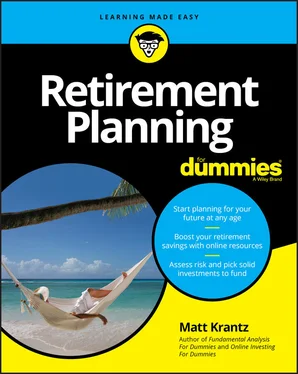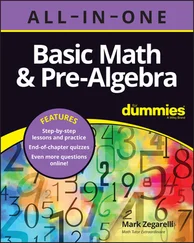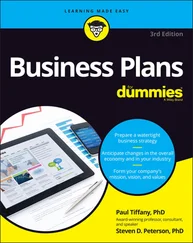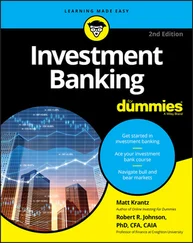3 Part 1: Getting Started Part 1
Chapter 1: Retirement Planning Is Up to You Chapter 1
Blazing Your Own Retirement Plan Blazing Your Own Retirement Plan Retirement planning is simply about making sure you have resources available when you’re no longer generating them from your labor. However, the financial industry hijacked retirement planning, and now it’s all about deferred tax accounts, 401(k)s, and mutual funds. It wasn’t always that way. More than a hundred years ago, more Americans relied on direct labor for their basic needs. In the late 1800s, for instance, about half of Americans were involved in farming. Back then, retirement planning was “an heir and a spare.” You wanted to make sure that you had enough kids to keep the farm running after you no longer wanted, or were able, to push a plow. But now, less than 5 percent of the population touches food before it arrives at the grocery store. And people are more mobile, so your adult children are just as likely to live on the other side of the state as in your basement. In addition, birthrates are falling as more people decide against having children. These shifts have turned money into the currency of retirement planning. Rather than having a house full of children who will take care of you in your grand old age, retirement planning is about having enough money when you can no longer work. Famous investor Warren Buffett addressed the importance of putting your money to work when he said, “If you don’t find a way to make money while you sleep, you will work until you die.”
Measuring Your Lifespan Retirement Planning Beginnings: The Pension Changing Times: The 401(k) Social Security: The De Facto Safety Net Chapter 2: Determining How Much You Spend Finding Out Where Your Money Goes Measuring Your Spending Putting Your Spending in Context Improving Your Numbers Chapter 3: Calculating How Much You Need to Retire Getting to Know the 4 Percent Rule Using Online Retirement Calculators Understanding Why Starting Early Is Important Chapter 4: Choosing the Right Account Retirement Planning in a Nutshell A Great Place to Start: 401(k)s IRAs: A Cornerstone of Retirement Planning Self-Employed Plans What’s the Catch? Chapter 5: Gauging Your Appetite for Risk Getting a Handle on Your Risk Tolerance The ABCs of Asset Classes Chapter 6: Opening Your Accounts Getting Your 401(k) Up and Running Plugging into Your IRA Connecting with a Financial Planner
4 Part 2: Using Online Resources Chapter 7: Managing and Optimizing Your 401(k) Getting Online Checking Your Portfolio Allocation Powering Your 401(k) with Contributions Discovering Other Nifty Aspects of Your 401(k) Plan Site Chapter 8: Taking Your IRA to the Next Level Getting Online with Your IRA Provider Checking Your Portfolio Asset Allocation Understanding Your IRA Contributions Taking Money out of Your IRA Chapter 9: Optimizing Your Retirement with Third-Party Offerings Understanding Fees Examining Your Portfolio Using Morningstar Putting Your 401(k) Under the BrightScope Microscope Grading Your Retirement Plans in Other Ways Chapter 10: Digging into Social Security Discovering All the Benefits of Social Security Managing Social Security Information Online Planning for Social Security in Retirement
5 Part 3: Maximizing Your Retirement Knowledge Chapter 11: Balancing Retirement Savings with Other Needs Cleaning Up Your Personal Balance Sheet Saving for a Home Saving for College Chapter 12: Fine-Tuning Your Asset Allocation Exploring Stock Strategies Diving for Income It’s Easy Being Green: The Rise of ESG Chapter 13: Keeping Your Retirement on Track Tracking Your Portfolio’s Health Tracking and Updating Your Goals Chapter 14: Gearing Up for Retirement Creating a Retirement Budget Thinking about Annuities Unlocking a Goldmine: Reverse Mortgage Chapter 15: Understanding Pensions Checking a Private Pension's Funding Understanding the Problems with Public Pensions Understanding Pensions Inside-Out Managing Your Pension Chapter 16: Getting Insurance Building a Health Insurance Plan Defending Your Money with Insurance
6 Part 4: The Part of Tens Chapter 17: Top Ten Retirement Mistakes Waiting to Save Ignoring Fees Not Securing Your Information Prioritizing College Savings Over Retirement Not Diversifying Your Portfolio Waiting for the “Right Time” to Invest Having Inadequate Insurance Taking Money from Your Accounts Early Not Checking Your Social Security Benefit Not Thinking about Income Chapter 18: Top Ten Retirement Questions How Much Money Do I Need? Is Medicare Enough? What Will I Do with My Free Time? Will I Run Out of Money? Should I Have a Roth or Traditional IRA? How Good Is My 401(k)? What’s an RMD? Can Retirement Rules Change? What Can I Do If I’m Near Retirement Age and Don’t Have a Plan? Do I Need a Financial Advisor?
7 Index
8 About the Author
9 Connect with Dummies
10 End User License Agreement
1 Chapter 1 TABLE 1-1 Life Expectancy of Americans TABLE 1-2 Maxing Out a 401(k)
2 Chapter 2 TABLE 2-1 2019 Tax Brackets TABLE 2-2 Typical American Budget
3 Chapter 3 TABLE 3-1 The 4 Percent Rule with $1 Million Saved TABLE 3-2 The 4 Percent Rule With Less Than $1 Million Saved TABLE 3-3 Adjusting the 4 Percent Rule, Based on Retirement Age TABLE 3-4 No Pain, No Gain TABLE 3-5 Start Early When Saving for Retirement TABLE 3-6 Getting to $1 Million by Age 65
4 Chapter 4TABLE 4-1 Where Americans Put Their Retirement MoneyTABLE 4-2 Deductible IRA Contribution Amounts (2020)TABLE 4-3 Roth IRA Eligibility (2020)TABLE 4-4 Some Exceptions to the 10% Penalty
5 Chapter 5TABLE 5-1 Key Market IndexesTABLE 5-2 Reasonable Investment ExpectationsTABLE 5-3 Popular Ways to Categorize StocksTABLE 5-4 Investments that Zig When the Market ZagsTABLE 5-5 Popular Bond CategoriesTABLE 5-6 Saving $1 Million
6 Chapter 6TABLE 6-1 Target-Date Funds Are Catching on FastTABLE 6-2 Five Brokers to Consider for Your IRATABLE 6-3 Comparing Robo-Advisors
7 Chapter 7TABLE 7-1 Understanding 401(k) Contribution Rates
8 Chapter 8TABLE 8-1 Investments That Zig When the Market Zags
9 Chapter 9TABLE 9-1 Low Costs Equal Higher Investment SuccessTABLE 9-2 Paying More Fees Costs You Dearly
10 Chapter 10TABLE 10-1 Age and Work History Define SSDI EligibilityTABLE 10-2 Benefits with Full Retirement Age of 67
11 Chapter 11TABLE 11-1 Total Nonbusiness BankruptciesTABLE 11-2 Covering an Unexpected $1,000 CostTABLE 11-3 U.S. Inflation RateTABLE 11-4 Interest Rates Influence an Emergency FundTABLE 11-5 Forms of DebtTABLE 11-6 Increasing College Costs
12 Chapter 12TABLE 12-1 Defining Company SizeTABLE 12-2 REITs: More Risk but More GainTABLE 12-3 Know Your BondsTABLE 12-4 Standard & Poor’s Credit RatingsTABLE 12-5 ESG Exchange-Traded Funds Are Plentiful
13 Chapter 13TABLE 13-1 A Sample Glide Path for Someone Retiring in 2065TABLE 13-2 A Prudent PortfolioTABLE 13-3 Are You Above Average?
14 Chapter 14TABLE 14-1 Average Spending Falls As We AgeTABLE 14-2 Suggested Stock Allocation at RetirementTABLE 14-3 Retirement BenchmarksTABLE 14-4 Sources of Retirement IncomeTABLE 14-5 Effect of Inflation Riders on an Immediate AnnuityTABLE 14-6 Recent Inflation Has Been Tame
15 Chapter 16TABLE 16-1 HSA Annual Contribution LimitsTABLE 16-2 Cost of Long-Term Care
1 Chapter 1FIGURE 1-1: Social Security’s Life Expectancy Calculator helps you see how your...FIGURE 1-2: Bankrate’s Life Expectancy Calculator factors in more details to he...FIGURE 1-3: Living to 100 Life Expectancy Calculator quizzes you with in-depth ...
2 Chapter 2FIGURE 2-1: Like most banks and credit card companies, Citibank tracks your spe...FIGURE 2-2: Mint.com provides an easy, free way to see where your money is goin...FIGURE 2-3: You have to pay for Quicken, but it gives you lots of control.FIGURE 2-4: Microsoft Excel puts you in control of your budget.FIGURE 2-5: Personal Capital helps you see where your money is going.FIGURE 2-6: Calculate how much that daily latte really costs.FIGURE 2-7: Upwork will help you find a side hustle.
Читать дальше












